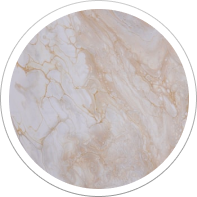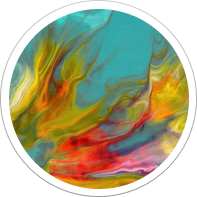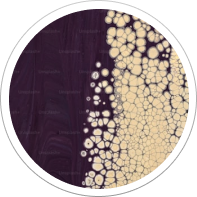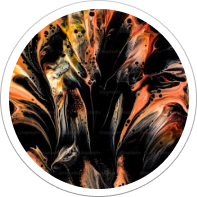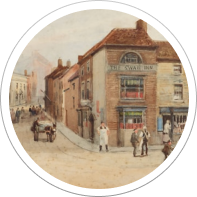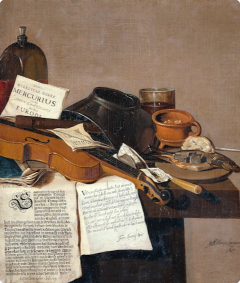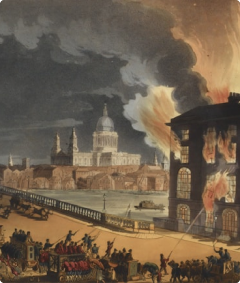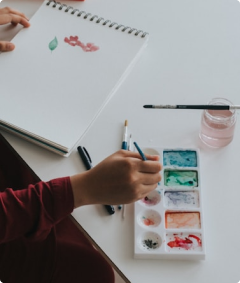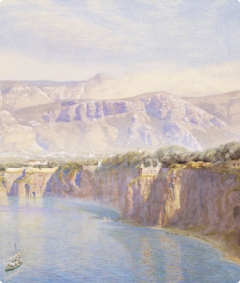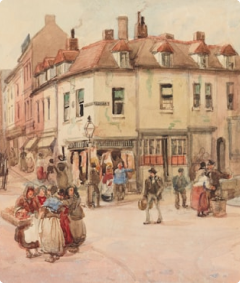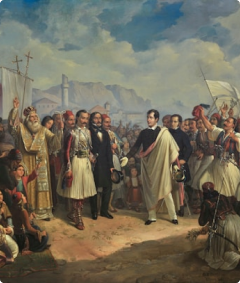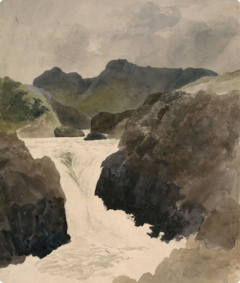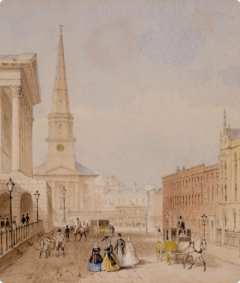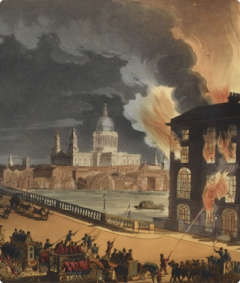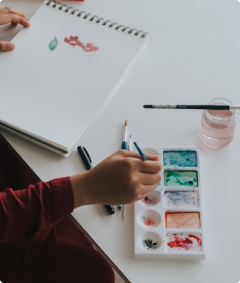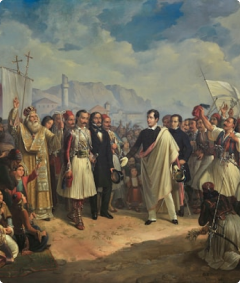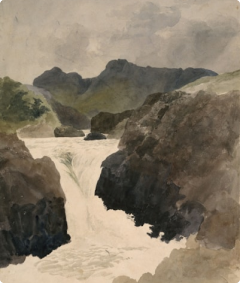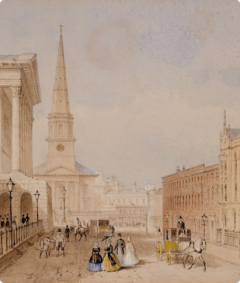
Top Seller
Canvas Prints & Photo Tiles, Wall Art from Jodello
Transform your space with Jodello’s canvas prints, photo tiles, and custom wall art. Turn memories and designs into stunning decor that reflects your unique style.
Get Started







How It Works:
Transform your space with Jodello’s canvas prints, photo tiles, and custom wall art.

1. Add Photos
Upload your favorite moments.

2. We Deliver
Get your custom prints fast.

3. You Stick
Peel, stick, and transform your walls effortlessly.

Featured Categories

Your Cherished Moments, Beautifully Displayed
Transform your space with top-quality, customizable canvas prints. From cherished moments to stunning artwork, Jodello offers a seamless way to craft beautiful pieces that showcase your unique taste.
Get Started

Why You'll Love Jodello

Seamless Installation
Easy-to-mount prints, no tools needed

No Damage, No Hassle
Sticks securely, removes cleanly

Endlessly Customizable
Designs that fit your style effortlessly

Customer Testimonials
Discover the conversations happening around our brand and see what our customers are saying about their experiences with us.
"I recently purchased a stunning canvas from Jodello, and I couldn't be happier with my choice! The vibrant colors and exquisite detail have truly transformed my living room. “


Liam Carter
"I recently purchased a stunning canvas from Jodello, and I couldn't be happier with my choice! The vibrant colors and exquisite detail have truly transformed my living room. “


Liam Carter
"I recently purchased a stunning canvas from Jodello, and I couldn't be happier with my choice! The vibrant colors and exquisite detail have truly transformed my living room. “


Liam Carter
FAQs
Easy-to-mount prints, no tools needed
Easy-to-mount prints, no tools needed
Easy-to-mount prints, no tools needed
Easy-to-mount prints, no tools needed
Easy-to-mount prints, no tools needed
Easy-to-mount prints, no tools needed
Easy-to-mount prints, no tools needed
Easy-to-mount prints, no tools needed
The Revolutionary Rise of Custom Canvas Prints & Wall Art in Contemporary Home Design
The metamorphosis of interior aesthetics has witnessed an extraordinary surge in personalized wall décor solutions, with canvas prints emerging as the quintessential choice for discerning homeowners and interior enthusiasts worldwide. This transformative medium transcends conventional framing methods, offering an unparalleled fusion of artistic sophistication and accessible luxury that resonates with diverse demographic preferences and budgetary considerations.
Contemporary living spaces increasingly demand versatile decorative elements that harmonize with evolving design philosophies while maintaining durability and visual impact. Canvas prints fulfill these multifaceted requirements through their inherent adaptability, premium aesthetic appeal, and remarkable longevity characteristics that distinguish them from traditional paper-based artwork and conventional photographic displays.
The burgeoning popularity of custom canvas artwork reflects broader societal shifts toward personalization and meaningful interior storytelling. Modern consumers actively seek distinctive decorative solutions that reflect individual narratives, cherished memories, and personal artistic sensibilities rather than mass-produced generic artwork that lacks emotional resonance or personal significance.
Canvas printing methodology represents a sophisticated convergence of traditional artistic mediums and cutting-edge digital reproduction capabilities. This symbiotic relationship enables the transformation of digital photography, original artwork, and creative compositions into tangible, museum-quality displays that rival hand-painted masterpieces in visual impact and textural richness.
The economic accessibility of canvas prints democratizes art collection and interior decoration, making premium visual aesthetics attainable for households across various income brackets. This affordability factor, combined with extensive customization possibilities, positions canvas prints as the preferred alternative to expensive original artwork and costly framing solutions.
Professional interior designers increasingly incorporate canvas prints into their project portfolios due to their versatility in complementing diverse design schemes, from minimalist contemporary environments to elaborate traditional settings. The medium's inherent flexibility accommodates various scale requirements, color palettes, and thematic preferences without compromising aesthetic cohesion.
The durability characteristics of canvas prints ensure long-term value retention and sustained visual appeal, making them prudent investments for both residential and commercial applications. Unlike paper-based prints susceptible to fading, moisture damage, and physical deterioration, canvas prints maintain their vibrancy and structural integrity across extended timeframes.
Understanding Canvas Print Fundamentals and Material Composition
Canvas print construction involves sophisticated material engineering that combines traditional textile manufacturing with modern printing innovations to create durable, visually stunning artistic displays. The foundation of exceptional canvas prints lies in fabric selection, with cotton and polyester representing the primary substrate options, each offering distinct advantages and performance characteristics suited to specific application requirements.
Cotton canvas substrates provide superior color absorption properties, enabling deep pigment penetration that enhances print longevity and color fidelity. The natural fiber structure of cotton creates subtle textural variations that impart authentic artistic character reminiscent of traditional oil paintings and hand-rendered artwork. Cotton's organic composition ensures excellent compatibility with various ink formulations while maintaining dimensional stability across temperature and humidity fluctuations.
Polyester canvas alternatives excel in color retention and surface vibrancy, maintaining pigments primarily on the substrate surface to achieve brilliant, saturated color reproduction. The synthetic fiber composition provides enhanced moisture resistance and improved handling characteristics during printing and stretching processes. Polyester substrates demonstrate superior resistance to environmental factors including ultraviolet radiation, atmospheric pollutants, and mechanical stress.
Hybrid canvas compositions combining cotton and polyester fibers optimize performance characteristics by balancing color absorption, durability, and cost considerations. These engineered substrates leverage the complementary properties of natural and synthetic fibers to achieve optimal print quality while maintaining economic viability for mass production applications.
The weave density and texture profile of canvas substrates significantly influence final print characteristics and visual appeal. Fine weave canvases provide smooth surface finishes ideal for photographic reproductions and detailed artwork, while coarse weave options enhance textural depth and artistic authenticity for painterly compositions and abstract designs.
Canvas preparation processes including priming and surface treatments ensure optimal ink adhesion and color reproduction consistency. Professional-grade primers create uniform absorption characteristics across the entire substrate surface, preventing color variations and ensuring consistent print quality throughout the entire artwork dimensions.
Frame construction materials and methodologies directly impact canvas print durability and presentation quality. Kiln-dried hardwood frames provide superior dimensional stability and longevity compared to softwood alternatives, while precision-machined joints ensure lasting structural integrity under varying environmental conditions.
The stretching process requires specialized expertise to achieve optimal canvas tension without inducing stress concentrations that could compromise long-term structural integrity. Professional stretching techniques distribute mechanical loads evenly across the entire canvas surface while maintaining proper geometric alignment and preventing warping or distortion.
Historical Evolution and Cultural Impact of Canvas Artistry
The lineage of canvas as an artistic medium extends through centuries of creative expression, establishing its credentials as the preferred substrate for masterful compositions by legendary artists whose works continue to inspire contemporary aesthetic sensibilities. Renaissance masters recognized canvas's superior properties compared to wood panels and other available substrates, initiating a transformation that would reshape artistic practices and influence cultural movements across successive generations.
Leonardo da Vinci's pioneering experiments with canvas substrates demonstrated the medium's exceptional capacity for capturing intricate details and subtle tonal variations essential to his revolutionary painting techniques. His methodical approach to surface preparation and pigment application established foundational principles that continue to inform contemporary canvas print production methodologies and quality standards.
Claude Monet's impressionistic masterpieces showcase canvas's remarkable ability to capture and convey atmospheric effects and luminous color relationships that define the impressionist movement. His innovative brushwork techniques and color theories influenced subsequent artistic developments while demonstrating canvas's versatility in supporting diverse creative approaches and stylistic expressions.
Vincent van Gogh's expressive canvases illustrate the medium's capacity to withstand vigorous application techniques and textural manipulation while maintaining structural integrity and color brilliance. His emotionally charged compositions demonstrate canvas's role as both artistic foundation and creative collaborator in the realization of visionary artistic statements.
The industrial revolution catalyzed significant advances in canvas manufacturing processes, improving consistency, availability, and affordability while expanding accessibility to broader artistic communities. Mass production capabilities enabled standardization of canvas formats and preparation methods, facilitating artistic commerce and educational instruction across diverse geographical regions.
Twentieth-century technological innovations in photographic reproduction and printing methodologies established the conceptual framework for contemporary canvas print production. Early experiments in photographic transfer processes demonstrated the feasibility of reproducing photographic images on canvas substrates, initiating developments that would eventually culminate in modern digital printing capabilities.
The emergence of digital photography in the late twentieth century created unprecedented opportunities for canvas print applications, enabling the transformation of digital images into tangible artistic displays without traditional photographic processing limitations. This technological convergence democratized art creation and reproduction while expanding creative possibilities for both professional and amateur practitioners.
Contemporary canvas print popularity reflects broader cultural trends toward personalization, authenticity, and meaningful decorative choices that resonate with individual experiences and aesthetic preferences. Modern consumers increasingly value unique, customized décor elements that reflect personal narratives rather than generic mass-produced alternatives lacking emotional connection or personal significance.
Comprehensive Canvas Print Variations and Style Classifications
Canvas print diversity encompasses numerous stylistic approaches and presentation formats designed to accommodate various aesthetic preferences, spatial requirements, and functional applications across residential, commercial, and institutional environments. Understanding these distinctions enables informed decision-making regarding optimal canvas print selection for specific project requirements and design objectives.
Gallery-wrapped presentations represent the most popular contemporary canvas print format, featuring imagery that extends around frame edges to create seamless, borderless displays that eliminate the need for additional framing elements. This presentation style maximizes visual impact while simplifying installation procedures and reducing overall project costs through integrated mounting solutions.
Framed canvas presentations combine stretched canvas substrates with decorative perimeter framing to create formal, traditional displays suitable for conservative design schemes and professional environments. Frame selection significantly influences overall aesthetic impact, with options ranging from minimalist contemporary profiles to elaborate ornate designs that complement specific decorative themes and architectural styles.
Museum-wrapped canvas prints feature neutral-colored edges or extended imagery borders that maintain visual continuity while providing professional presentation quality suitable for gallery exhibitions and high-end residential installations. This presentation format balances aesthetic sophistication with practical mounting considerations while ensuring longevity and professional appearance.
Rolled canvas prints provide maximum shipping efficiency and customized framing flexibility by delivering canvas prints without stretching or frame assembly. This format enables bulk ordering, economical shipping, and personalized framing selection while accommodating diverse size requirements and presentation preferences through subsequent professional mounting services.
Split canvas configurations divide single images across multiple panels to create dynamic, contemporary displays that accommodate large wall spaces while generating visual interest through compositional segmentation. Multi-panel presentations enable creative arrangement possibilities and scalable sizing options that adapt to various architectural contexts and spatial constraints.
Panoramic canvas prints optimize landscape and architectural photography through extended aspect ratios that capture expansive scenes and dramatic compositional elements. These specialized formats require careful image selection and cropping considerations to ensure effective visual impact and proper proportional relationships within intended display environments.
Textured canvas surfaces simulate traditional painting techniques through specialized printing processes that create raised pigment patterns and brush stroke effects. These enhanced presentations bridge the gap between photographic reproduction and hand-rendered artwork while maintaining the economic advantages and customization flexibility of digital printing processes.
Evaluating Canvas Print Investment Value and Long-term Benefits
Canvas print investment considerations encompass multiple factors including initial acquisition costs, expected lifespan, maintenance requirements, and aesthetic value retention over extended periods. Professional evaluation of these parameters enables informed purchasing decisions that optimize long-term value while satisfying immediate decorative objectives and budget constraints.
Initial cost analysis must consider not only base canvas print pricing but also associated expenses including shipping, mounting hardware, installation services, and potential framing requirements. Comprehensive cost evaluation reveals true project expenses and enables accurate comparison with alternative decorative options including traditional framed prints, original artwork, and other wall covering solutions.
Durability characteristics directly influence long-term value propositions through their impact on replacement frequency and maintenance requirements. High-quality canvas prints utilizing premium substrates and archival inks demonstrate exceptional longevity, often maintaining color fidelity and structural integrity for decades under proper care and environmental conditions.
Aesthetic versatility enhances canvas print value through adaptability to changing decorative schemes and spatial reconfigurations. Unlike permanent wall treatments or built-in decorative elements, canvas prints enable easy relocation, replacement, and updating as design preferences evolve or living situations change.
Customization capabilities provide unique value propositions unavailable through mass-produced decorative alternatives. Personal photography, family portraits, travel memories, and artistic compositions create irreplaceable decorative elements that appreciate in sentimental value while maintaining relevance across changing trends and lifestyle transitions.
Professional presentation quality rivals expensive original artwork and gallery pieces at significantly reduced costs, enabling the creation of sophisticated interior environments without prohibitive financial investments. This accessibility democratizes high-end aesthetic achievement while maintaining quality standards comparable to premium decorative alternatives.
Market resale potential varies depending on subject matter, artistic merit, and customization degree. Generic landscape or abstract prints may retain limited resale value, while unique family photography or artistic compositions maintain personal significance that transcends monetary considerations.
Environmental impact considerations favor canvas prints over alternatives requiring frequent replacement or disposal. Durable, long-lasting canvas prints minimize waste generation while reducing environmental footprints associated with repeated manufacturing and shipping processes.
Professional Quality Assessment and Selection Criteria
Quality evaluation of canvas prints requires comprehensive assessment of multiple performance parameters including print resolution, color accuracy, substrate characteristics, frame construction, and finishing details that collectively determine overall value and satisfaction levels. Systematic evaluation methodologies enable informed selection decisions that optimize results within specified budget parameters.
Print resolution specifications determine image sharpness and detail reproduction capabilities, with higher resolutions enabling larger display sizes while maintaining acceptable quality standards. Professional applications typically require minimum 300 DPI resolution at final print dimensions to ensure crisp detail rendering and professional appearance quality.
Color gamut capabilities define the range of reproducible colors and tonal variations achievable through specific printing processes and ink formulations. Wide gamut printing systems reproduce more accurate color relationships and subtle tonal transitions, particularly important for photographic reproductions and artwork requiring precise color matching.
Substrate weight and thickness specifications influence durability, handling characteristics, and presentation quality. Heavier canvas weights demonstrate superior dimensional stability and premium tactile qualities while providing enhanced durability under environmental stress and handling conditions.
Frame construction quality directly impacts long-term structural integrity and presentation consistency. Precision-manufactured frames utilizing quality materials ensure proper canvas tension maintenance and geometric stability throughout the expected service life of the canvas print.
Stretching quality assessment involves evaluation of corner construction, tension uniformity, and edge finishing details that affect both appearance and durability. Professional stretching techniques create smooth, wrinkle-free surfaces with consistent tension distribution and secure corner attachment methods.
Ink formulation quality determines color permanence, fade resistance, and overall longevity characteristics. Archival ink systems utilizing pigment-based formulations provide superior lightfastness and chemical stability compared to dye-based alternatives susceptible to degradation and color shifting.
Surface protection treatments enhance durability and maintenance characteristics through protective coatings that resist moisture, dust accumulation, and minor abrasion damage. UV-resistant coatings provide additional protection against solar radiation exposure in high-light environments.
Expert Placement Strategies and Spatial Design Principles
Strategic canvas print placement maximizes visual impact while ensuring harmonious integration with existing architectural elements, furniture arrangements, and overall design schemes. Professional placement methodologies consider multiple factors including viewing angles, lighting conditions, spatial proportions, and compositional relationships that influence perceived aesthetic success.
Wall space evaluation begins with accurate dimensional measurements and identification of architectural constraints including electrical outlets, switches, HVAC registers, and structural elements that influence placement options. Comprehensive spatial analysis enables optimal positioning decisions that maximize visual impact while avoiding potential installation complications.
Proportional relationships between canvas dimensions and wall space significantly influence visual balance and aesthetic harmony. Generally accepted design principles suggest canvas prints should occupy 60-75% of available wall space when functioning as primary focal points, with smaller percentages appropriate for supplementary decorative elements within larger compositional arrangements.
Height placement guidelines ensure optimal viewing comfort and visual integration with surrounding elements. Standard recommendations position canvas centers at 57-60 inches above floor level, corresponding to average eye height for standing viewers while accommodating seated viewing perspectives in residential environments.
Lighting considerations dramatically influence canvas print visibility and color perception throughout varying daily conditions. Natural light orientation, artificial lighting placement, and potential glare sources require careful evaluation to ensure consistent viewing quality and prevent adverse effects on print longevity.
Furniture relationships establish visual connections and compositional unity between canvas prints and surrounding decorative elements. Proper alignment with sofas, tables, beds, and other major furniture pieces creates cohesive design relationships that enhance overall room aesthetics and functional flow.
Gallery wall arrangements enable creative combinations of multiple canvas prints to generate dynamic visual displays that accommodate diverse image formats and subject matter. Successful gallery walls require careful planning of spacing relationships, visual weights, and thematic connections to achieve unified aesthetic impact.
Traffic flow considerations ensure canvas print placement enhances rather than impedes natural movement patterns within living spaces. Strategic positioning creates visual interest points while maintaining clear pathways and functional accessibility throughout interior environments.
Environmental Stability and Climate Management
Environmental control represents the most critical factor in canvas print preservation, with temperature and humidity fluctuations causing dimensional changes that stress canvas fibers and frame joints. Optimal storage and display conditions maintain consistent temperatures between 65-70°F with relative humidity levels stabilized at 45-55% to minimize mechanical stress and prevent mold or mildew development. These parameters create equilibrium conditions that allow canvas materials to achieve dimensional stability without experiencing the expansion and contraction cycles that lead to cracking, warping, and premature deterioration.
Atmospheric pressure variations, often overlooked in preservation protocols, significantly impact canvas prints through subtle dimensional changes that accumulate over time. Barometric pressure fluctuations cause minute expansions and contractions in canvas fibers, particularly those made from natural materials like cotton or linen. These microscopic movements, while individually insignificant, create cumulative stress patterns that weaken fiber bonds and compromise structural integrity. Professional preservation facilities employ climate-controlled environments with barometric stabilization systems to minimize these effects, ensuring long-term dimensional stability for valuable canvas artworks.
Seasonal climate variations present particular challenges for canvas print preservation, as heating and cooling systems create cyclical environmental stresses. Winter heating typically reduces indoor humidity levels below optimal ranges, causing canvas materials to contract and become brittle. Conversely, summer humidity spikes can saturate canvas fibers with moisture, leading to expansion, sagging, and potential biological contamination. Sophisticated climate control systems maintain consistent environmental conditions year-round, protecting canvas prints from seasonal deterioration patterns that gradually compromise their structural and aesthetic integrity.
Air circulation patterns within display environments significantly influence canvas print preservation by affecting moisture distribution, temperature gradients, and particulate contamination levels. Stagnant air promotes moisture accumulation in localized areas, creating microenvironments conducive to biological growth and chemical deterioration. Conversely, excessive air movement can create pressure differentials that stress canvas surfaces and accelerate particulate accumulation. Optimized ventilation systems provide gentle, uniform air circulation that maintains environmental stability without creating mechanical stress on displayed artworks.
Microclimate variations within individual rooms present additional preservation challenges, as temperature and humidity gradients develop around heat sources, air conditioning vents, and exterior walls. These localized environmental variations subject canvas prints to inconsistent conditions that promote uneven deterioration patterns and compromise long-term stability. Professional display installations employ environmental monitoring systems with multiple sensors to identify and mitigate microclimate variations, ensuring uniform preservation conditions throughout display spaces.
Vapor pressure dynamics within sealed frames create unique preservation considerations for canvas prints protected by glazing or backing materials. Trapped moisture within frame assemblies can create condensation cycles that damage canvas surfaces and promote biological contamination. Specialized frame designs incorporate vapor barriers, desiccant materials, and controlled ventilation systems to maintain optimal humidity levels within sealed environments while preventing external contamination and moisture ingress.
Geographic location significantly influences environmental preservation challenges, as regional climate patterns create specific deterioration risks for canvas prints. Coastal environments expose artworks to salt-laden air that accelerates chemical deterioration and corrosion of mounting hardware. Desert climates create extreme dryness that can desiccate canvas materials and cause brittleness. Tropical regions present high humidity and temperature combinations that promote biological growth and accelerate chemical degradation processes. Understanding regional environmental factors enables implementation of targeted preservation strategies that address specific geographic risks.
Photodegradation Prevention and Light Control
Ultraviolet radiation exposure constitutes the primary threat to canvas print color stability and longevity, with photochemical degradation processes affecting both ink formulations and substrate materials. Direct sunlight contains high concentrations of UV radiation that break molecular bonds in colorants and canvas fibers, leading to irreversible fading, discoloration, and structural weakening. Professional preservation protocols mandate careful placement away from windows and bright light sources, or installation of specialized UV-filtering glazing systems that block harmful radiation while maintaining visual clarity.
Visible light exposure, while less damaging than UV radiation, contributes significantly to long-term deterioration through cumulative photochemical effects. High-intensity artificial lighting sources, including halogen, fluorescent, and LED systems, emit varying spectral compositions that interact differently with canvas print materials. Incandescent lighting produces minimal UV radiation but generates substantial heat that accelerates chemical degradation processes. Fluorescent systems emit significant UV radiation requiring filtration, while LED lighting offers improved spectral control but may produce intense blue light wavelengths that affect certain ink formulations.
Light dosage calculations provide quantitative frameworks for managing photodegradation risks through controlled exposure protocols. Professional conservation standards express light exposure in lux-hours, representing the cumulative effect of light intensity over time. Canvas prints should receive no more than 150,000 lux-hours annually, with daily exposure limited to 150-200 lux for 8-10 hours. These parameters require sophisticated lighting control systems with dimming capabilities, automatic timers, and light sensors to maintain precise exposure limits while providing adequate illumination for viewing and appreciation.
Spectral filtering technologies offer advanced protection against specific wavelengths known to cause photodegradation while preserving visual quality for viewing and appreciation. UV-absorbing glazing materials block radiation below 400 nanometers without affecting visible light transmission, providing effective protection against the most damaging portions of the electromagnetic spectrum. Neutral density filters reduce overall light intensity while maintaining color balance, enabling safe display in high-illumination environments. Specialized interference filters can selectively remove specific wavelengths known to affect particular ink chemistry formulations.
Intermittent illumination strategies reduce cumulative light exposure while maintaining accessibility for viewing and appreciation. Automated lighting systems with motion sensors provide illumination only when viewers are present, dramatically reducing total light exposure while maintaining convenience and security. Time-controlled lighting protocols limit daily exposure periods during peak viewing hours, protecting artworks during unattended periods. Variable intensity systems adjust illumination levels based on ambient conditions, providing minimum necessary lighting for safe viewing while minimizing photodegradation risks.
Reflective and refractive lighting design principles enhance viewing quality while minimizing direct exposure to harmful radiation. Indirect illumination systems use reflective surfaces to provide even, diffused lighting that eliminates hot spots and reduces glare while minimizing UV exposure. Fiber optic lighting systems separate heat and UV generation from the display area, providing clean, controllable illumination with minimal deterioration risks. Holographic optical elements can distribute light uniformly across display surfaces while filtering harmful wavelengths and reducing energy consumption.
Display rotation protocols preserve valuable canvas prints by distributing light exposure across multiple artworks, preventing excessive cumulative damage to individual pieces. Professional galleries and museums implement systematic rotation schedules that limit individual artwork exposure while maintaining continuous displays for public viewing. Storage facilities provide controlled environments for artworks during non-display periods, ensuring preservation conditions that halt deterioration processes. Digital documentation enables virtual display of rotated artworks, extending accessibility while protecting originals from excessive light exposure.
Surface Contamination Control and Cleaning Protocols
Dust accumulation affects both aesthetic appearance and long-term preservation by creating abrasive particles that damage surface finishes and provide moisture retention sites that promote biological growth. Particulate matter includes atmospheric dust, fabric fibers, skin cells, pollen, and industrial emissions that settle on canvas surfaces over time. These contaminants create mechanical abrasion during cleaning procedures, trap moisture that promotes biological growth, and provide nutrients for microorganisms that can damage canvas materials. Professional cleaning protocols employ specialized techniques that remove contamination without causing additional damage to delicate canvas surfaces.
Electrostatic forces attract and retain dust particles on canvas surfaces, creating persistent contamination that resists simple cleaning methods. Canvas materials, particularly those treated with synthetic coatings or mounted on non-conductive substrates, develop static charges that attract airborne particles. Anti-static treatments reduce particle attraction while specialized cleaning equipment neutralizes electrostatic charges during cleaning procedures. Ionizing air systems in display environments minimize static charge buildup, reducing dust attraction and facilitating routine maintenance.
Biological contamination presents severe preservation threats through mold, mildew, and bacterial growth that directly damage canvas fibers and create permanent staining. Microorganisms require moisture, nutrients, and suitable temperatures to establish colonies on canvas surfaces. Dust and organic debris provide nutrients, while humidity fluctuations create moisture conditions suitable for biological growth. Prevention strategies focus on environmental control, surface cleanliness, and antimicrobial treatments that prevent initial colonization and spread of biological contaminants.
Chemical contamination from atmospheric pollutants, cleaning products, and off-gassing materials creates complex preservation challenges requiring specialized remediation techniques. Urban air pollution introduces sulfur compounds, nitrogen oxides, and particulate matter that react with canvas materials and cause permanent chemical changes. Indoor air pollution from building materials, furnishings, and cleaning products can be more concentrated and damaging than outdoor contamination. Air filtration systems with activated carbon and molecular sieve materials remove gaseous contaminants while HEPA filtration eliminates particulate matter.
Cleaning material selection critically impacts preservation outcomes, as inappropriate cleaning agents can cause irreversible damage to canvas prints through chemical reactions, solvent penetration, or mechanical abrasion. Water-based cleaning systems must account for canvas dimensional stability, as moisture absorption can cause warping, color bleeding, and adhesive failures. Solvent-based cleaners may dissolve ink formulations or penetrate protective coatings, causing permanent damage. Dry cleaning methods using soft brushes, microfiber cloths, and controlled vacuum systems provide safe alternatives that remove surface contamination without introducing potentially damaging chemicals or moisture.
Professional cleaning equipment enables safe, effective contamination removal through specialized tools designed specifically for artwork preservation. Soft-bristled brushes made from natural materials provide gentle mechanical cleaning action without scratching delicate surfaces. Microfiber cleaning cloths with controlled electrostatic properties attract and retain dust particles without redistributing contamination. Low-suction vacuum systems with adjustable power and specialized attachments remove loose particles without creating mechanical stress on canvas surfaces.
Frequency and timing of cleaning procedures must balance contamination removal with cumulative handling damage, as excessive cleaning can cause more deterioration than the contamination itself. Professional assessment protocols evaluate contamination levels, canvas condition, and environmental factors to determine optimal cleaning schedules. High-traffic environments require more frequent cleaning to prevent contamination buildup, while stable, controlled environments may require minimal intervention. Documentation of cleaning procedures enables tracking of cumulative handling effects and optimization of cleaning protocols over time.
Moisture Management and Dimensional Stability
Moisture management prevents dimensional instability, biological growth, and adhesion failures that compromise canvas print integrity through comprehensive humidity control and moisture barrier systems. Canvas materials are hygroscopic, meaning they absorb and release moisture based on surrounding atmospheric conditions. This moisture exchange causes dimensional changes that stress canvas fibers and mounting systems, potentially leading to cracking, warping, and separation from support structures. Professional preservation protocols maintain stable humidity levels while protecting artworks from localized moisture sources and rapid humidity fluctuations.
Hygrothermographic monitoring provides quantitative data on environmental conditions affecting canvas print stability through continuous measurement of temperature and humidity variations. Digital data logging systems record environmental parameters over extended periods, enabling identification of problematic patterns and environmental instabilities that may not be apparent through periodic manual monitoring. Wireless sensor networks provide real-time monitoring of multiple locations within display environments, alerting preservation professionals to conditions that threaten artwork integrity.
Vapor barriers and moisture control systems protect canvas prints from localized humidity sources while maintaining overall environmental stability. Specialized backing materials with controlled vapor transmission rates prevent moisture migration from walls and support structures while allowing canvas materials to equilibrate with display environment conditions. Desiccant systems within sealed display cases maintain stable low humidity levels for moisture-sensitive artworks, while humidification systems provide controlled moisture addition in excessively dry environments.
Condensation prevention requires careful attention to surface temperatures and dew point calculations, as temperature differentials can cause moisture deposition on canvas surfaces even in apparently controlled environments. Cold surfaces near air conditioning vents, exterior walls, or windows may experience condensation formation when warm, humid air contacts cooler surfaces. Thermal imaging systems identify temperature variations that may lead to condensation problems, enabling corrective measures such as insulation improvements or air circulation modifications.
Emergency moisture remediation protocols address accidental water exposure through immediate response procedures that minimize damage and prevent secondary deterioration. Water damage from leaks, flooding, or fire suppression systems requires rapid intervention to prevent permanent staining, biological growth, and structural damage. Immediate removal from contaminated environments, controlled drying procedures, and professional conservation treatment can often salvage water-damaged artworks if intervention occurs within critical time windows.
Seasonal moisture variations require adaptive preservation strategies that account for heating system effects in winter and natural humidity increases during summer months. Heating systems typically reduce indoor humidity levels below optimal ranges, necessitating humidification systems or display case modifications to maintain stable conditions. Summer humidity increases may require enhanced dehumidification or modified ventilation patterns to prevent moisture-related damage. Predictive monitoring systems can anticipate seasonal changes and automatically adjust environmental control systems to maintain optimal conditions.
Long-term dimensional stability monitoring tracks gradual changes in canvas dimensions that may indicate environmental problems or material degradation. Photogrammetric measurement systems provide non-contact dimensional monitoring with high precision, enabling detection of subtle changes that precede visible damage. Regular measurement protocols establish baseline dimensions and track changes over time, providing early warning of environmental problems or material degradation that requires intervention.
Physical Protection and Handling Procedures
Physical protection involves safeguarding canvas prints from impact damage, punctures, and abrasion through careful handling procedures and strategic placement away from high-traffic areas. Canvas materials are particularly vulnerable to puncture damage from sharp objects, pressure damage from improper stacking or leaning, and edge damage from careless handling. Professional protection protocols encompass proper handling techniques, appropriate storage methods, secure mounting systems, and environmental design that minimizes physical risks to valuable artworks.
Handling protocols minimize mechanical stress and contamination transfer through standardized procedures that protect both artwork integrity and handler safety. Clean, dry hands or powder-free gloves prevent fingerprint contamination and moisture transfer while providing adequate grip for safe manipulation. Two-person handling procedures distribute weight and provide additional safety for large or valuable pieces. Proper lifting techniques support artworks at structural points rather than decorative elements or fragile edges that may fail under stress.
Transportation requirements for canvas prints demand specialized packaging systems that provide protection against vibration, impact, and environmental variations during transit. Custom-fitted foam padding distributes forces evenly while preventing shifting during movement. Climate-controlled transportation vehicles maintain stable environmental conditions during extended transit periods. Shock-indicating devices monitor transportation stresses and provide evidence of rough handling that may have caused damage requiring post-transit inspection and possible conservation treatment.
Storage systems for canvas prints must provide physical protection while maintaining environmental stability and accessibility for inspection and maintenance. Vertical storage racks with padded slots prevent pressure damage while enabling efficient space utilization and easy access to individual pieces. Horizontal storage requires adequate support to prevent sagging while protecting surfaces from dust and contamination. Climate-controlled storage environments maintain preservation conditions during extended storage periods while providing security against theft and vandalism.
Mounting hardware selection significantly impacts long-term preservation by providing secure attachment without causing localized stress concentrations that may lead to tearing or distortion. Professional mounting systems distribute loads across multiple attachment points while allowing dimensional changes without creating stress. Stainless steel hardware resists corrosion in humid environments, while cushioning materials prevent direct metal contact with canvas materials. Adjustable mounting systems accommodate dimensional changes while maintaining secure attachment and proper positioning.
Security considerations protect valuable canvas prints from theft, vandalism, and unauthorized handling through physical barriers, surveillance systems, and access control procedures. Display cases provide physical protection while enabling viewing and appreciation. Alarm systems detect unauthorized access or tampering with artworks, enabling rapid response to security breaches. Restricted access areas limit handling to trained personnel while maintaining security for valuable collections.
Risk assessment procedures identify potential hazards in display and storage environments that may threaten canvas print integrity through systematic evaluation of physical, environmental, and security factors. Professional risk assessments consider building systems, environmental hazards, security vulnerabilities, and emergency response capabilities to develop comprehensive protection strategies. Regular reassessment ensures that protection measures remain effective as conditions change over time.
Chemical Stability and Atmospheric Protection
Chemical exposure risks arise from cleaning products, aerosols, and atmospheric pollutants that react with ink formulations and substrate materials, creating permanent damage through molecular-level reactions that cannot be reversed through conventional conservation techniques. Industrial emissions, vehicle exhaust, and indoor air pollution create complex chemical environments that gradually degrade canvas prints through oxidation, acid hydrolysis, and photochemical reactions. Professional protection protocols include avoiding harsh cleaning chemicals, maintaining adequate ventilation, and minimizing exposure to tobacco smoke and other airborne contaminants that may contain reactive compounds.
Off-gassing from building materials, furnishings, and display materials creates significant chemical hazards for canvas prints housed in enclosed environments. Formaldehyde emissions from composite wood products, volatile organic compounds from paints and adhesives, and plasticizer migration from vinyl materials can cause permanent staining, chemical degradation, and structural weakening of canvas materials. Materials testing protocols evaluate potential display and storage materials for chemical compatibility, while air quality monitoring identifies problematic emission sources that require remediation or replacement.
Atmospheric acidification from sulfur dioxide and nitrogen oxide pollution creates particularly damaging conditions for canvas prints through formation of sulfuric and nitric acids that directly attack cellulose fibers and organic colorants. Urban environments typically exhibit elevated acid levels that accelerate deterioration processes, while rural areas may experience seasonal variations related to agricultural activities and industrial emissions. Alkaline buffering systems neutralize acidic conditions, while specialized air filtration systems remove acid-forming pollutants before they can react with artwork materials.
Ozone exposure represents a significant but often overlooked threat to canvas print preservation, as this reactive gas readily attacks organic materials and causes chain reactions that propagate damage throughout canvas structures. Ozone levels fluctuate seasonally and daily based on solar radiation, temperature, and pollutant concentrations, creating variable exposure risks that may not be apparent without continuous monitoring. Activated carbon filtration systems specifically designed for ozone removal provide effective protection, while environmental monitoring enables identification of high-risk periods requiring additional protective measures.
Metallic contamination from mounting hardware, display fixtures, and environmental sources can catalyze chemical reactions that accelerate canvas degradation through formation of metal salts and reactive oxygen species. Copper and iron contamination are particularly problematic, as these metals readily form compounds that cause permanent staining and continued chemical activity long after initial exposure. Protective barriers prevent direct metal contact with canvas materials, while regular inspection identifies early signs of metallic contamination that can be addressed before permanent damage occurs.
Chemical incompatibility between different materials used in canvas print construction can create internal deterioration processes that are difficult to detect and prevent. Adhesives, coatings, and substrate materials may react with each other over time, causing embrittlement, discoloration, and loss of adhesion. Compatibility testing protocols evaluate material combinations before use, while accelerated aging tests predict long-term chemical stability and identify potential problems before they manifest in actual artworks.
Preventive conservation chemistry employs antioxidants, UV absorbers, and other chemical stabilizers to slow degradation processes and extend canvas print lifespans. These treatments must be carefully selected and applied to provide protection without altering appearance or creating additional chemical risks. Professional application ensures proper concentration and distribution, while monitoring protocols track treatment effectiveness and identify any adverse effects requiring remediation or treatment modification.
Monitoring and Assessment Protocols
Periodic inspection procedures enable early detection of deterioration signs including color fading, canvas loosening, frame damage, and surface contamination through systematic evaluation protocols that provide quantitative assessment of canvas print condition over time. Professional assessment combines visual inspection, instrumental analysis, and photographic documentation to create comprehensive condition reports that enable tracking of changes and optimization of preservation strategies. Regular assessment allows timely intervention to prevent minor issues from developing into major preservation challenges requiring expensive remediation or replacement.
Photographic documentation provides permanent records of canvas print condition that enable comparison over time and identification of gradual changes that may not be apparent through periodic visual inspection alone. High-resolution digital photography with calibrated color standards enables accurate color reproduction and measurement of dimensional changes. Raking light photography reveals surface texture variations and mechanical damage that may not be visible under normal illumination. Ultraviolet fluorescence photography can identify previous treatments, repairs, and contamination that are invisible under normal lighting conditions.
Instrumental analysis techniques provide quantitative data on canvas print condition and environmental factors affecting preservation. Colorimetry measures color changes with precision that exceeds visual assessment capabilities, enabling early detection of fading and discoloration. Surface roughness measurements track mechanical wear and degradation of protective coatings. X-ray fluorescence spectroscopy identifies metallic contamination and characterizes ink formulations. Fourier transform infrared spectroscopy evaluates chemical changes in canvas materials and protective treatments.
Digital Documentation Infrastructure for Artwork Conservation
Database management systems represent the cornerstone of contemporary artwork preservation, establishing sophisticated frameworks that meticulously organize inspection data, environmental monitoring records, and comprehensive treatment histories. These intricate systems serve as the foundation for evidence-based preservation decisions, enabling conservators and collection managers to make informed choices that safeguard valuable canvas prints for future generations. The implementation of robust digital infrastructure transforms traditional preservation practices, moving beyond antiquated paper-based record-keeping toward dynamic, searchable databases that capture every nuance of an artwork's condition journey.
The architectural complexity of modern database systems accommodates multifaceted data relationships, linking environmental conditions to specific deterioration patterns, treatment interventions to long-term outcomes, and handling protocols to structural integrity measurements. These interconnected data networks reveal previously hidden correlations that inform preservation strategies, allowing institutions to identify which environmental factors most significantly impact canvas stability, which treatment methods yield optimal longevity results, and which handling procedures minimize cumulative damage over time.
Sophisticated data validation protocols ensure accuracy and consistency across all recorded information, implementing automated checks that flag anomalous readings, incomplete entries, or contradictory observations. These quality assurance mechanisms prevent the accumulation of erroneous data that could compromise future preservation decisions, maintaining the integrity of the institutional knowledge base that guides conservation practices. Cross-referencing capabilities enable conservators to instantly access related records, comparing current observations with historical patterns to identify emerging deterioration trends before they become irreversible.
The integration of multimedia documentation capabilities transforms traditional text-based records into comprehensive visual histories, incorporating high-resolution photography, microscopic imaging, spectroscopic analysis results, and detailed condition mapping. These visual elements provide contextual richness that textual descriptions alone cannot convey, enabling future conservators to understand the precise nature of deterioration patterns, treatment boundaries, and structural modifications. Time-stamped imagery creates chronological sequences that document the evolution of specific condition issues, providing invaluable reference materials for developing targeted treatment protocols.
Metadata standardization ensures that preservation records maintain compatibility across different institutional systems, facilitating collaborative research efforts and enabling the sharing of preservation knowledge across the global conservation community. Standardized vocabularies and controlled terminology prevent ambiguity in condition descriptions, treatment documentation, and environmental reporting, creating a universal language that transcends institutional boundaries and promotes consistency in preservation practices worldwide.
Historical Data Retrieval and Pattern Recognition Systems
Digital archives revolutionize the accessibility of historical preservation information, transforming vast repositories of conservation knowledge into instantly searchable resources that support comprehensive trend analysis and pattern recognition. These sophisticated retrieval systems employ advanced indexing algorithms that categorize preservation data across multiple dimensions, enabling conservators to quickly locate relevant historical precedents, treatment outcomes, and environmental correlations that inform current preservation challenges.
The implementation of intelligent search capabilities transcends simple keyword matching, incorporating semantic analysis that understands the contextual relationships between conservation concepts, material properties, and deterioration mechanisms. These systems recognize that a query about canvas delamination might benefit from historical records related to adhesive failure, humidity fluctuations, or mechanical stress, automatically expanding search parameters to capture relevant information that might otherwise remain hidden in archived records.
Temporal analysis functionality enables the identification of cyclical patterns in environmental conditions, deterioration rates, and treatment effectiveness, revealing how seasonal variations, institutional changes, or evolving preservation practices influence long-term artwork stability. These chronological insights inform strategic planning decisions, helping conservators anticipate future preservation needs based on historical trends and implement proactive measures that prevent deterioration before it becomes visible or measurable.
Cross-collection analysis capabilities facilitate the comparison of preservation outcomes across different institutions, material types, and conservation approaches, identifying best practices that yield superior long-term results. These comparative studies reveal which environmental control strategies prove most effective for specific canvas types, which treatment methods demonstrate optimal durability, and which handling protocols minimize cumulative damage over extended periods.
The integration of statistical analysis tools transforms historical preservation data into predictive models that forecast future conservation needs, estimate treatment lifespans, and optimize resource allocation decisions. These analytical capabilities enable institutions to develop evidence-based budgets for preservation activities, prioritize conservation treatments based on urgency and effectiveness, and justify preservation expenditures through demonstrable outcomes and quantifiable benefits.
Machine learning algorithms continuously refine search accuracy and pattern recognition capabilities, learning from user interactions to improve the relevance of retrieved information and the precision of trend identification. These adaptive systems become increasingly valuable over time, developing institutional memory that captures the subtle expertise of experienced conservators and makes this knowledge accessible to future preservation professionals.
Computational Forecasting for Conservation Planning
Predictive modeling represents a paradigm shift in preservation planning, leveraging historical data patterns to anticipate future conservation needs and optimize resource allocation strategies with unprecedented precision. These sophisticated analytical frameworks synthesize decades of preservation records, environmental monitoring data, and treatment outcomes to generate probabilistic forecasts that guide strategic decision-making and preventive conservation initiatives.
The mathematical foundations of predictive modeling incorporate complex variables including material composition, environmental exposure histories, treatment interventions, and handling frequencies to calculate deterioration trajectories and estimate remaining useful lifespans for canvas prints. These calculations consider the cumulative effects of multiple stress factors, recognizing that artwork deterioration rarely results from single causes but emerges from the interaction of numerous environmental, chemical, and mechanical influences over extended periods.
Monte Carlo simulations generate thousands of potential deterioration scenarios, accounting for the uncertainty inherent in complex preservation environments and providing probability distributions for various preservation outcomes. These statistical models enable conservators to quantify risks associated with different preservation strategies, compare the long-term costs and benefits of various treatment options, and make informed decisions about resource allocation priorities.
Sensitivity analysis reveals which variables most significantly influence preservation outcomes, identifying critical control points where targeted interventions yield maximum benefit for long-term artwork stability. These insights guide the development of customized preservation protocols that address the specific vulnerabilities of individual artworks while optimizing the efficiency of conservation resources and maximizing the protective value of each preservation intervention.
Dynamic modeling capabilities accommodate changing conditions and emerging threats, updating predictions as new data becomes available and adjusting recommendations based on evolving environmental conditions, institutional changes, or advancing preservation techniques. This adaptability ensures that preservation planning remains relevant and effective despite the inherent uncertainties of long-term conservation challenges.
Integration with institutional planning systems enables seamless coordination between preservation forecasts and operational budgets, staffing decisions, and facility management strategies. These connections ensure that predicted conservation needs translate into actionable plans with adequate resources, appropriate expertise, and optimal timing for maximum preservation effectiveness.
Remote Access Infrastructure and Data Security Protocols
Cloud-based preservation management systems transform institutional conservation practices by providing ubiquitous access to critical preservation data while maintaining robust security protocols that protect sensitive collection information. These distributed computing architectures enable conservators, collection managers, and preservation specialists to access comprehensive condition records, treatment histories, and environmental monitoring data from any location with internet connectivity, facilitating collaborative conservation efforts and enabling rapid response to emerging preservation challenges.
The scalability of cloud infrastructure accommodates institutions of all sizes, from small museums with limited collections to major galleries housing thousands of artworks, providing cost-effective solutions that eliminate the need for expensive on-site server installations and specialized technical support staff. These systems automatically scale computing resources based on demand, ensuring optimal performance during peak usage periods while minimizing costs during periods of reduced activity.
Redundant backup systems protect irreplaceable preservation data through geographically distributed storage architectures that maintain multiple copies of critical information across different physical locations. These protective measures ensure that preservation records remain accessible even in the event of natural disasters, equipment failures, or cyber security incidents that might compromise local storage systems. Automated backup verification procedures continuously test data integrity and recovery capabilities, providing confidence that preservation knowledge remains secure and retrievable.
Advanced encryption protocols safeguard sensitive collection information during transmission and storage, implementing military-grade security measures that protect institutional data from unauthorized access while maintaining user-friendly interfaces that facilitate legitimate preservation activities. Multi-factor authentication systems ensure that only authorized personnel can access specific preservation records, with granular permission controls that restrict access based on professional roles and institutional responsibilities.
Real-time synchronization capabilities enable multiple users to collaborate simultaneously on preservation projects, sharing observations, treatment plans, and condition assessments in dynamic environments that reflect updates instantaneously across all connected devices. These collaborative features eliminate the delays and inconsistencies associated with traditional communication methods, enabling preservation teams to coordinate activities efficiently and maintain comprehensive documentation of all conservation activities.
Disaster recovery protocols establish clear procedures for maintaining preservation operations during emergency situations, ensuring that critical conservation decisions can continue even when primary systems experience disruptions. These contingency plans include alternative access methods, emergency contact procedures, and essential data prioritization schemes that maintain core preservation capabilities under adverse conditions.
Standardized Assessment Frameworks for Condition Evaluation
Condition scoring systems establish rigorous methodologies for quantifying canvas print deterioration through standardized numerical frameworks that enable objective comparison of condition states across diverse collections and institutional contexts. These systematic evaluation protocols transform subjective visual assessments into quantifiable metrics that support data-driven preservation decisions and facilitate meaningful communication about artwork condition among conservation professionals.
The development of comprehensive scoring rubrics addresses every aspect of canvas print condition, from surface-level contamination and color fading to structural deformation and support degradation. These detailed evaluation criteria establish consistent standards for assessing crack propagation patterns, delamination severity, planar distortions, and media loss, providing conservators with reliable tools for documenting condition changes over time and comparing preservation needs across different artworks.
Weighted scoring algorithms recognize that different types of deterioration pose varying levels of threat to long-term artwork survival, assigning appropriate priority values to structural damage, chemical degradation, and aesthetic alterations. These hierarchical assessment frameworks guide preservation resource allocation by identifying which condition issues require immediate intervention versus those that can be monitored over longer periods without risking permanent damage.
Digital condition mapping interfaces enable precise documentation of deterioration locations, severity gradients, and temporal progression patterns through interactive visualization tools that overlay condition scores onto high-resolution artwork images. These spatial assessment capabilities provide comprehensive understanding of how deterioration patterns relate to environmental exposures, handling practices, and previous treatment interventions, informing targeted conservation strategies that address specific vulnerability zones.
Inter-rater reliability protocols ensure consistency among different assessors, implementing calibration exercises and standardization procedures that minimize subjective variations in condition scoring. These quality control measures maintain the validity of comparative analyses and longitudinal studies, enabling meaningful interpretation of condition trends and treatment effectiveness evaluations across different assessment periods and personnel changes.
Statistical correlation analysis reveals relationships between condition scores and environmental variables, identifying which factors most significantly influence canvas print stability and providing quantitative evidence for environmental control recommendations. These data-driven insights support evidence-based preservation planning and enable institutions to prioritize infrastructure improvements that yield maximum protective benefits for their collections.
Professional Standards and Quality Assurance in Conservation Assessment
Professional consultation ensures that monitoring and assessment protocols align with current conservation standards while incorporating cutting-edge technologies that enhance precision and efficiency in preservation practices. These collaborative relationships between institutions and specialist conservators create knowledge-sharing networks that elevate preservation quality across the entire conservation community and ensure that emerging best practices reach institutions regardless of their size or resources.
The establishment of professional mentorship programs connects experienced conservators with emerging preservation specialists, creating structured learning environments that transfer tacit knowledge and practical expertise that cannot be captured in written protocols alone. These relationships ensure continuity of conservation traditions while fostering innovation and adaptation to new challenges in canvas print preservation.
Specialist conservators contribute deep expertise in complex deterioration mechanisms that affect canvas prints, including photochemical degradation processes, mechanical failure modes, and environmental interaction effects that require specialized knowledge to diagnose and treat effectively. Their involvement in assessment protocols ensures that subtle condition indicators receive appropriate recognition and that treatment recommendations reflect comprehensive understanding of long-term preservation implications.
Peer review processes validate assessment procedures through systematic evaluation by independent experts who examine methodology soundness, measurement accuracy, and interpretive validity. These quality assurance mechanisms identify potential biases, methodological limitations, and interpretive errors that could compromise preservation decisions, maintaining the scientific rigor essential for effective long-term conservation.
Continuing education initiatives ensure that conservation professionals remain current with evolving preservation techniques, emerging technologies, and advancing scientific understanding of artwork deterioration processes. These ongoing learning opportunities include workshops, conferences, research publications, and hands-on training sessions that introduce new assessment methods, treatment approaches, and monitoring technologies.
International collaboration networks facilitate the exchange of preservation knowledge across cultural and geographic boundaries, enabling institutions to benefit from global expertise and diverse approaches to canvas print conservation challenges. These collaborative relationships support the development of universal standards while respecting regional variations in conservation practices and institutional contexts.
Crisis Response Protocols and Emergency Conservation Procedures
Emergency response protocols establish comprehensive frameworks for addressing sudden deterioration events, environmental threats, or catastrophic incidents that endanger canvas print collections and require immediate intervention to prevent irreversible damage. These crisis management systems integrate rapid assessment procedures, emergency contact networks, and prioritized response actions that minimize harm during critical preservation emergencies.
Rapid triage procedures enable conservators to quickly assess the severity of emergency conditions and prioritize response actions based on time sensitivity, potential for permanent damage, and available resources. These streamlined evaluation protocols focus on identifying artworks at immediate risk while establishing clear criteria for emergency treatment decisions that must be made under time pressure without compromising conservation ethics.
Immediate Containment: Halting Ongoing Damage
When preservation emergencies erupt—floods, fire, impact events, environmental contamination—the paramount need is to stop the deterioration in its tracks. Immediate containment measures provide that critical breathing space. Such interventions include enacting environmental isolation, erecting temporary structural supports, applying protective surface barriers, and containing contaminants to prevent spread.
Environmental isolation involves shielding vulnerable items from harmful fluctuations—whether moisture, pollutants, or particulates—through temporary enclosures, plastic draping, or protective sheathing. Structural stabilization may call for shoring-up weakened architecture or propping fragile objects to forestall collapse or deformation. Surface protection can mean applying inert, reversible coatings to flaking pigments or wrapping from light damage. Contamination containment restricts access to hazardous zones—like soot-laden surfaces, mold spore clouds, or chemical residues—using barriers that remain harmless to future conservation efforts.
These protective interventions are not intended as permanent fixes but as triage—delicate actions that forestall further loss while preserving the potential for comprehensive, longer‑term solutions.
Emergency Coordination: Linking Expertise and Response
Effective emergency response hinges upon well‑established communication networks and pre‑arranged protocols. Institutions benefit from standing agreements or contact systems that connect them instantly with conservation specialists, structural engineers, emergency teams, and salvage experts.
Having up‑to‑date rosters of resources ensures that when a crisis strikes, help arrives without delay. These protocols often include predefined hierarchies—who coordinates, who documents, who oversees safety, who initiates salvage. Collaborations may extend across institutions, allowing for shared equipment, pooling conservator capacities, or securing temporary storage in safer environments. These coordinated responses build resilience, speeding up support while maintaining focus on preservation ethics and aligned priorities.
At the heart of these efforts lies mutual aid—whether formal regional compacts or informal peer networks—so that no institution must tackle a complex crisis in isolation.
Archival Journaling: Documenting the Crisis Story
Every emergency demands a clear recounting of what occurred, how it was addressed, and what remains. Documentation becomes the unalterable narrative that guides recovery and informs future responses. Visual records—photographs, annotated sketches, video logs—capture initial conditions, environmental parameters, defect patterns, and evolving risks. Written logs record who did what, materials used, time elapsed, immediate outcomes, and observations about unexpected developments.
These chronicles are instrumental for the next phase: analyzing what worked, what failed, and how to refine protocols. They also contribute to collective wisdom, enriching the broader conservation corpus with case studies and procedural clarity—becoming, in effect, communal memory for safeguarding cultural patrimony.
Framework for Rehabilitation: Planning the Path to Stability
Once the immediate threat has been checked, the preservation journey proceeds into methodical rehabilitation. This recovery roadmap encompasses continued observation, phased treatment actions, and methodical restoration schedules spanning months or even years.
Recovery involves returning environmental stability—controlling air quality, humidity, and thermal extremes—while mitigating latent risks like mold resurgence, oxidative decay, or structural creep. It establishes monitoring routines—frequent condition checks, environmental logging, and tracking of any tendencies toward relapse. Follow‑up treatments may include more invasive but still reversible procedures: consolidation of weakened substrates, cleaning of contaminants, repair of deformed surfaces. Environmental restoration might involve upgrading HVAC systems, subsurface drainage, or introducing filtering to preempt recurrence.
By interlinking vigilant monitoring with targeted interventions, the recovery phase ensures that stabilization becomes enduring, not temporary.
Principles that Preserve Integrity: Reversibility, Minimalism, Respect
Embedded within every stage of emergency action are guiding tenets that ensure integrity, authenticity, and ethical consistency. Three such guiding values stand out.
First, minimalism: Interventions should do only what is necessary—nothing more. Every action should preserve as much of the original material and intent as possible.
Second, reversibility: Materials and methods used must allow future conservators to undo them without damage. Adhesives should be easily removable, supports non‑invasive, protective coatings inert.
Third, respect for historic or original context: Emergency interventions must never obliterate signs of an artifact’s provenance, usage, or craftsmanship. Even provisional supports and coverings must be chosen with these considerations in mind—designed to be gentle, transparent in documentation, and when possible, congruent with the object’s character.
These principles transform emergency measures from mere reactive gestures into thoughtful continuations of stewardship.
Anticipatory Foundations for Crisis Readiness
Resilience arises not in the moment of upheaval, but through deliberate premeditation. Constructing a robust foundation means mapping potential threats—be it structural fragility, water incursion, infestation, or conflagration—and discerning the hierarchy of risk. This begins with a thorough vulnerability audit: surveying edifices for compromised integrity, evaluating proximity to flood zones, identifying pest entry points, and cataloging fire hazard potential. These assessments enable the delineation of critical zones and prioritized assets, underpinning a lucid, stratified response structure.
Once risks are delineated, crafting preassembled preservation ensembles becomes vital. These may include freeze‐drying apparatus, ethereal consolidants designed for delicate substrates, absorbent blotters capable of wicking moisture, breathable wrap materials that allow air exchange, and illumination‑safe document handling implements. Having these tools congregated in ready kits ensures time is not frittered away during a crisis, when decision-making must be both swift and precise.
Simulations and rehearsals augment readiness by situating staff in approximated emergency contexts. Here, roles become instinctual, inter-personal choreography crystallizes, and the cadence of response achieves seamless flow. Stress inoculation through structured drills fosters composure, so that when disruption comes, personnel act with deliberate alacrity rather than disoriented haste.
Preparedness thus transmutes reactive fear into measured guardianship, weaving a fabric of calm that bolsters preservation efforts even under duress.
Chronicles from the Field: Where Wisdom Emerges
Each catastrophe unveils fresh insight. Whether an actual event or a near-miss, every disruption can be mined for wisdom. Post‑incident retrospectives—structured as logging exercises, candid staff exchanges, or revisited scenario maquettes—probe what transpired, what protocols withstood pressure, and where communication faltered.
The act of reflecting augments capacity over time. Procedures become less brittle, collective assurance fortifies, and the institution itself becomes more morphic—capable of adapting as crises evolve. Tools are augmented, documentation schemas refined, and inter‑organizational liaisons deepened. In future emergencies, although the unwelcome nature of the event persists, clarity and coordination are elevated, and the mission of heritage preservation remains resolute.
Sustaining Awareness through Periodic Audits
Preparedness is not a static achievement—it demands persistent vigilance. Periodic re‑appraisals of environmental context (such as shifts in hydrology or vector prevalence), structural health, and staff acumen ensure alignment with current vulnerabilities. These cyclical evaluations should be scheduled and embedded into institutional rhythms, so readiness retains its potency over time.
Peppered throughout the institution’s calendar—perhaps quarterly or semiannually—these audits guarantee that equipment remains serviceable, that kits have not expired or degraded, and that personnel retain fluency with protocols. During these check-ins, any deficiencies can be addressed proactively: replenishing materials, replacing old components, and retraining personnel as needed. This ongoing cycle keeps safeguarding frameworks resilient and responsive.
Embedding Salvage Resources with Precision
When calamity strikes, the efficiency of salvage hinges on proximity and accessibility. Pre‑positioned caches of essential supplies—freeze‑drying implements, gentle consolidants, blotters, air‑permeable wrappings, lighting‑safe documentation gadgets—must be logically located near high‑value areas. Mapping out supply stations within reachable range ensures responders can access tools in minimal time.
Moreover, including inventory checklists within each kit streamlines readiness. By cross-referencing consumables and verifying kit integrity, staff avoid scrambling mid‑crisis. Employing lightweight, reproducible containers enhances mobility—responders can transfer components to affected zones without friction.
Conclusion
While resources and infrastructure are pivotal, the effectiveness of response ultimately depends on people. Structured drills focused on human dynamics—clear deliberation of roles, rehearsal of chain‑of‑command, articulation of communication channels—imbue the team with confidence. Beyond rehearsing tasks, these exercises reinforce relational trust and mutual anticipation: team members learn to anticipate one another’s needs, reducing friction when urgency mounts.
Incorporating stress factors—low lighting, time pressure, simulated equipment failure—during drills builds psychological fortitude. Teams become more nimble in ambiguous situations, better able to pivot when preconceived plans meet the unexpected. The net result is a synchronized response apparatus, where each individual knows their function, trusts colleagues, and responds with composure.
Preparedness demands iteration. After each drill or actual event, institutions must not merely rest on what went well; they must interrogate what misstepped. These learning cycles harness data—communication logs, timestamps, preserved decision trails, staff reflections—to refine response protocols.
By comparing each iteration, improvements emerge: perhaps consolidant distribution needed better labeling, or lighting‑safe documentation tools were slow to deploy, or communication faltered between tiers of command. These refinements get integrated back into rehearsals, forms, kit contents, training modules, and inter‑agency agreements.
Over time, the institution’s corpus of practice accumulates depth. What once was nascent procedure becomes durable infrastructure—guiding responders in genuine events with dexterity.
True preparedness transcends procedural checklists—it becomes woven into the ethos of the institution. When readiness permeates daily behavior, staff maintain situational awareness even during routine operations. Teams become habituated to thinking ahead: spotting potential hazards, noticing equipment gap, identifying latent threats.
Embedding resilience means fostering a culture of continuous improvement. Whether reviewing near‑misses, updating kit inventories, refreshing drill scripts, or enhancing structural fortifications, the organization grows more circumspect and resourceful. Emergencies, though unwelcome, no longer disorient; the institution meets them with composure, clarity, and an unwavering commitment to safeguarding its legacy.



